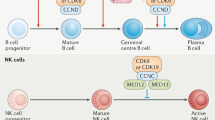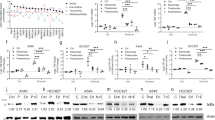Abstract
The steroids prednisolone and progesterone significantly altered the therapeutic indices of the alkylating agents, nitrogen mustard, melphalan, cyclophosphamide, phenyl acetic mustard and chlorambucil. For nitrogen mustard, chlorambucil and phenyl acetic mustard, prednisolone reduced host toxicity in the rat and enhanced the antitumour effectiveness against alkylating-agent-resistant strains of the Yoshida sarcoma and Walker carcinosarcoma. Progesterone also increased the therapeutic index of chlorambucil in the rat by decreasing its systemic toxicity. Two other alkylating agents, melphalan and cyclophosphamide, exhibited lower therapeutic indices in combination with prednisolone against alkylating-agent-sensitive tumours. This was due to the greater host toxicity of the combination than of the alkylating agent alone. In alkylating-agent-resistant tumours, however, a significant increase in growth delay was achieved if prednisolone was combined with the alkylating agent.
This is a preview of subscription content, access via your institution
Access options
Subscribe to this journal
Receive 24 print issues and online access
$259.00 per year
only $10.79 per issue
Buy this article
- Purchase on Springer Link
- Instant access to full article PDF
Prices may be subject to local taxes which are calculated during checkout
Similar content being viewed by others
Rights and permissions
About this article
Cite this article
Shepherd, R., Harrap, K. Modulation of the toxicity and antitumour activity of alkylating drugs by steroids. Br J Cancer 45, 413–420 (1982). https://doi.org/10.1038/bjc.1982.69
Issue Date:
DOI: https://doi.org/10.1038/bjc.1982.69
This article is cited by
-
Suppression of Hyperactive Immune Responses Protects against Nitrogen Mustard Injury
Journal of Investigative Dermatology (2015)



